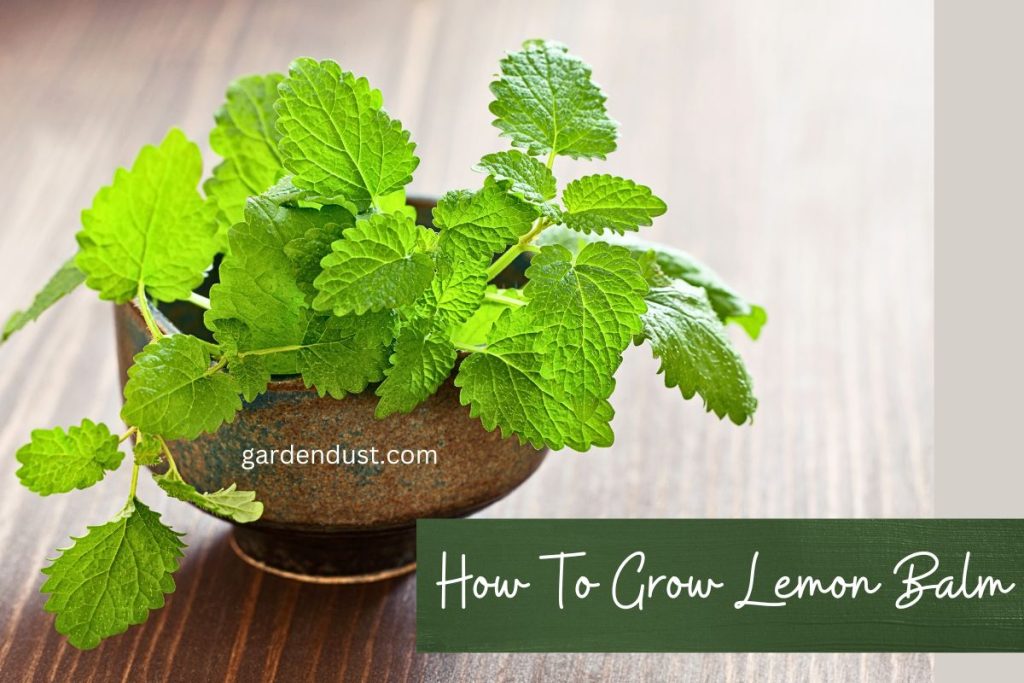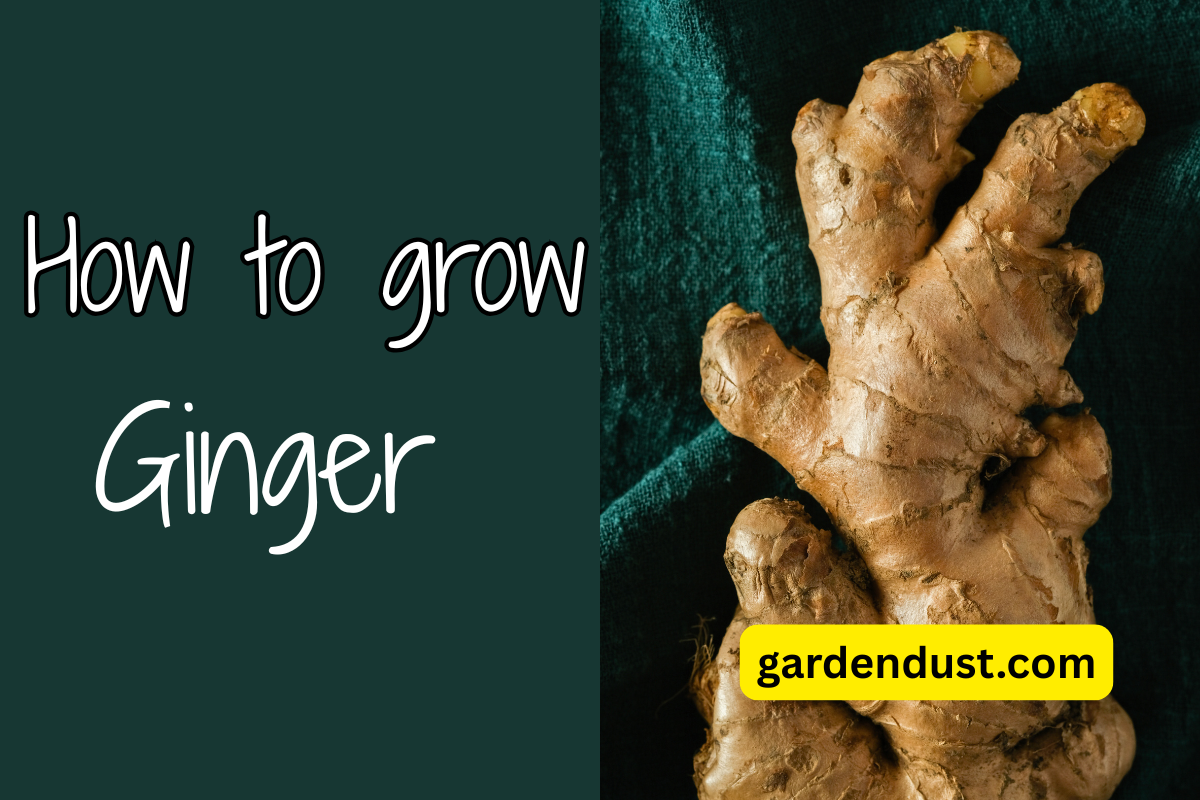Lemon balm (Melissa officinalis) is a versatile and fragrant herb that belongs to the mint family. Known for its lemony scent and numerous health benefits, this herb is a great addition to any garden. Whether you’re a seasoned gardener or a beginner, growing lemon balm is a rewarding and straightforward process. In this comprehensive guide, we will explore the steps of how to grow lemon balm from seed to harvest, offering valuable insights into soil preparation, planting, care, and harvesting techniques. Let’s start….
Botanical Name– Melissa officinalis
Family– Lamiaceae
Genus-Melissa
Native-Europe
Common Name– Lemon Balm
Plant Type-Perennial herbaceous plant
Plant Size–Height of 12 to 24 inches (30 to 60 cm) & Spread – 12 to 36 inches (30 to 90 cm)
Grow Lemon Balm-
Location
Before diving into the cultivation process, it’s crucial to choose the right location for your lemon balm. Lemon balm thrives in well-drained soil with a slightly acidic to neutral pH (around 6.0 to 7.5). Additionally, it prefers full sun to partial shade. A location with at least six hours of sunlight per day is ideal for promoting robust growth and enhancing the herb’s aromatic qualities.
Soil Preparation
Lemon balm prefers fertile, well-draining soil. Begin by preparing the soil to ensure optimal conditions for your herb to flourish. Conduct a soil test to determine the pH of your soil. If it’s too acidic, you can add lime to raise the pH. Conversely, if it’s too alkaline, incorporate sulfur to lower the pH.
Mix in well-rotted compost or aged manure to enhance the soil’s fertility and structure. This will provide essential nutrients and improve water retention. Use a garden fork or tiller to loosen the soil to a depth of about 8-10 inches. This allows the roots to penetrate easily and promotes overall plant health.
Planting Lemon Balm
Once the soil is prepared, it’s time to plant your lemon balm. You have two primary options: starting from seeds or purchasing seedlings.
Option 1-From Seeds
- Lemon balm seeds can be sown indoors 6-8 weeks before the last expected frost in your area. Alternatively, sow the seeds directly in the garden after the last frost.
- Plant the seeds in seed trays or small pots filled with seed-starting mix. Sow the seeds lightly on the surface, press them gently into the soil, and cover them with a thin layer of the mix.
- Keep the soil consistently moist until the seeds germinate, which typically takes 7-14 days. Once the seedlings have developed a couple of sets of true leaves, they are ready for transplanting.
Option 2-From Seedlings–
- If you prefer a head start, purchase healthy lemon balm seedlings from a reputable nursery or garden center.
- Plant the seedlings in your prepared garden bed, spacing them about 12 to 18 inches apart. Ensure that the crown of each seedling is at soil level.
Caring for Lemon Balm
Lemon balm is relatively low-maintenance, but providing proper care ensures vigorous growth and abundant harvests.
Watering
Keep the soil consistently moist but not waterlogged. Water at the base of the plant to prevent fungal diseases. Established plants typically require about 1 to 1.5 inches of water per week.
Mulching
Apply a layer of organic mulch around the plants to help retain soil moisture, suppress weeds, and regulate soil temperature.
Fertilizing
Lemon balm doesn’t require heavy feeding. A balanced, all-purpose fertilizer applied in spring should be sufficient. Avoid over-fertilizing, as this can lead to excessive foliage growth with diminished flavor.
Pruning
Regular pruning encourages bushier growth and helps maintain the plant’s shape. Pinch back the tips of the stems to promote lateral branching. Harvesting the leaves also serves as a form of pruning.
Pest Control
Lemon balm is generally resistant to pests, but occasional issues with aphids or spider mites may arise. Use insecticidal soap or neem oil for natural control.
How to Harvest Lemon Balm
Harvesting lemon balm is a gratifying step in the cultivation process. The leaves contain the highest concentration of essential oils, imparting the characteristic lemony fragrance.
Timing-Start harvesting when the plants are at least 6 to 8 inches tall and have developed a robust structure. For optimal flavor, harvest before the plant flowers.
Harvesting Method-Use clean, sharp scissors or pruning shears to cut the stems just above a set of leaves. Avoid removing more than one-third of the plant at a time to ensure continued growth.
Drying and Storing-To preserve the flavor and aroma, dry the harvested lemon balm. Hang bunches of stems upside down in a well-ventilated, dark area. Once dry, store the leaves in airtight containers away from direct sunlight.
Propagation of Lemon Balm
Lemon balm (Melissa officinalis) offers various propagation methods, providing flexibility for growers to choose the most suitable technique. Here’s a more detailed look at each method:
· Seed Propagation-
Start seeds indoors 6-8 weeks before the last frost. Use seed trays or pots with well-draining seed-starting mix. Sow seeds on the surface, press lightly, and cover with a thin layer of mix. Keep consistently moist until germination.
Alternatively, sow seeds directly in well-prepared garden soil after the last frost. Cover lightly and maintain soil moisture until germination.
· Division-
Division is best done in the spring or fall. Dig up the mature plant and divide the root ball into sections, ensuring each division has both roots and shoots. Replant divisions in well-prepared soil, water thoroughly, and provide care.
· Cuttings-
Take 4-6 inch (10-15 cm) cuttings from healthy, non-flowering stems in spring or early summer. Remove lower leaves, leaving a few at the top. Optional: Dip cut end in rooting hormone. Plant cuttings in well-draining soil or potting mix. Keep soil consistently moist until roots develop.
· Root Division-
Dig up the mature plant and separate at the root level, ensuring each section has roots and shoots. Replant in well-prepared soil, water thoroughly, and provide care.
· Self-Seeding-
Allow the plant to flower and produce seeds. The seeds will fall to the ground and germinate when conditions are suitable. Thin out seedlings as needed to prevent overcrowding or transplant them to desired locations.
How Lemon Balm Is Different From Bee Balm
Lemon balm (Melissa officinalis) and bee balm (Monarda spp.) are distinct herbs. While both lemon balm and bee balm belong to the Lamiaceae family, they differ in their aroma, flavor, uses, appearance, and growing conditions. Lemon balm is prized for its lemon-scented leaves and culinary uses, while bee balm is known for its vibrant flowers and attraction to pollinators. Here’s a brief overview of the differences between the two:-
Botanical Classification-
- Lemon Balm (Melissa officinalis)-Belongs to the Lamiaceae family, in the Melissa genus. It is a perennial herb known for its lemon-scented leaves.
- Bee Balm (Monarda spp.)-Belongs to the Lamiaceae family as well, but it is in the Monarda genus. There are several species within the Monarda genus, such as Monarda didyma (scarlet bee balm) and Monarda fistulosa (wild bergamot).
Aroma and Flavor-
- Lemon Balm-As the name suggests, lemon balm has a distinct lemon fragrance and flavor. The leaves are often used in culinary applications and herbal teas.
- Bee Balm-The leaves of bee balm, while aromatic, typically have a spicier, more herbal scent. The flowers of bee balm are known for their sweet and slightly minty taste.
Uses-
- Lemon Balm-Primarily used in culinary dishes, teas, and herbal remedies. It is known for its calming properties and is often used to make relaxing teas.
- Bee Balm-Known for its vibrant and attractive flowers, bee balm is commonly used in landscaping and gardens. It attracts pollinators, especially bees and butterflies. Some Native American tribes also used bee balm for medicinal purposes.
Appearance-
- Lemon Balm-Has green, heart-shaped leaves with a mild serration. The plant has a bushy and low-growing habit.
- Bee Balm– Typically has lance-shaped leaves and produces showy, tubular flowers in various colors like red, pink, or purple. The plant tends to be taller and more upright compared to lemon balm.
Growing Conditions-
- Lemon Balm-Prefers well-drained soil and full to partial sun exposure. It can be grown in herb gardens, containers, or as a ground cover.
- Bee Balm– Thrives in moist, well-drained soil and full sun. It is often found in flower beds and attracts pollinators, making it a popular choice for wildlife gardens.
Usages of Lemon Balm-
Lemon balm (Melissa officinalis) is a versatile herb widely appreciated for its culinary and medicinal uses. Its leaves, with a subtle lemon flavor, add zest to salads and desserts, and make a delightful herbal tea. Known for its calming properties, lemon balm is a popular choice in traditional medicine to alleviate stress and aid digestion. The essential oil finds application in aromatherapy, contributing to a relaxing atmosphere. Beyond its aromatic and culinary appeal, lemon balm attracts beneficial insects like bees, making it a valuable addition to gardens. With its diverse and delightful applications, lemon balm stands as a cherished herb in various aspects of daily life.
Growing lemon balm is a rewarding experience that offers both culinary and medicinal benefits. By selecting the right location, preparing the soil, and providing proper care, you can enjoy a bountiful harvest of this versatile herb. Whether used in teas, culinary dishes, or for its therapeutic properties, lemon balm is a valuable addition to any garden. Follow the steps outlined in this comprehensive guide to cultivate healthy lemon balm plants from seed to harvest, and savor the delights of this aromatic herb in your home. Happy Gardening…







